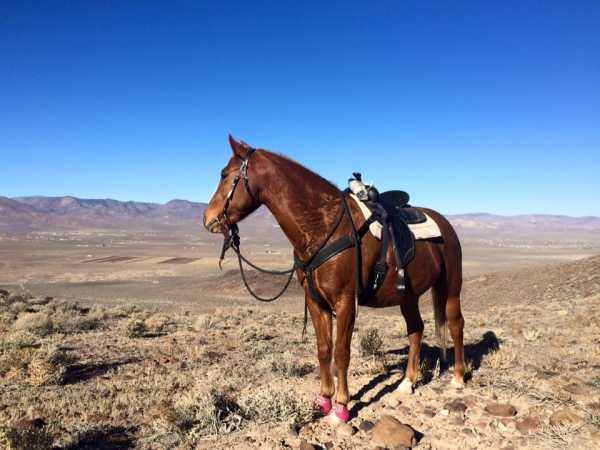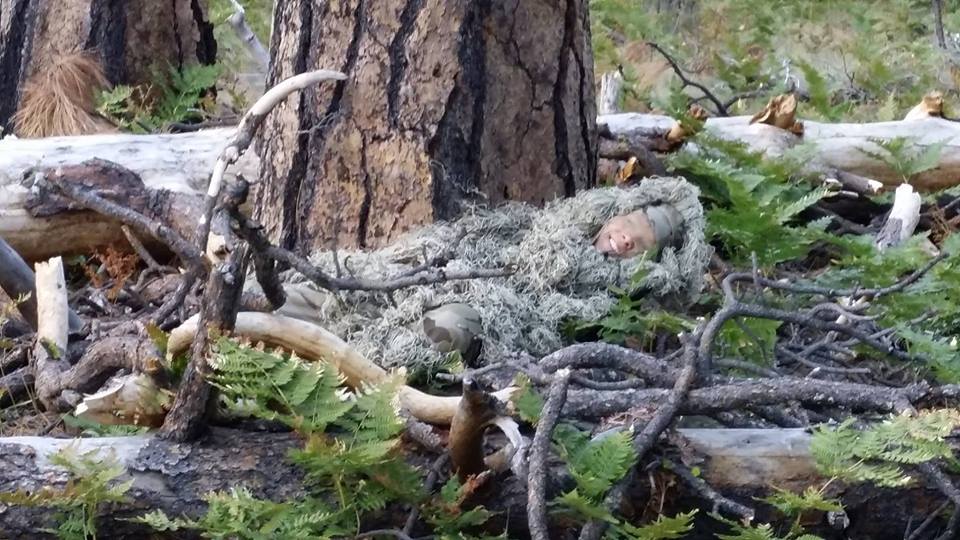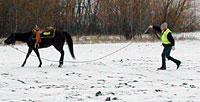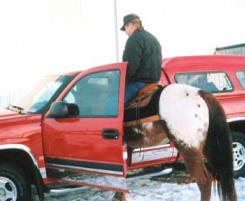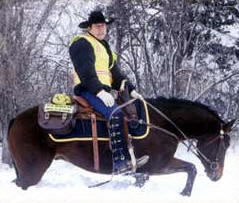
|
Least Resistance Training Concepts
|

|
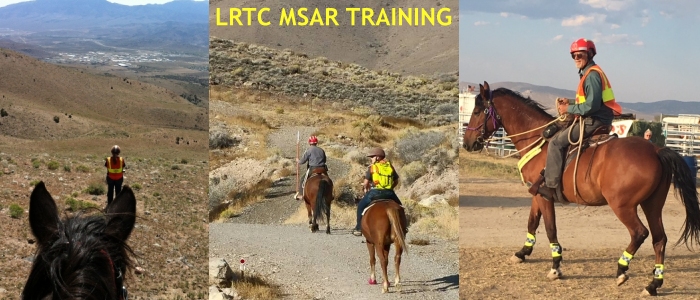
WHEN: March 31 through April 2, 2017
and Equine Scent Detection Author |
| WHAT THE PROGRAM IS ABOUT |
|
This program includes classroom, arena practice and field exercises. The target participants are mounted riders and non-mounted SAR responders who work alongside and in coordination with mounted responders.
Principal elements of this program include team building, improving rider sensitivity to their mounts' communication cues, and developing equine scent detection skills. The field exercises will include searches for "hidden" people and objects. |
| AUDITORS |
|
In addition to attending presentations and observing training activities, auditors may participate in field exercises, typically as observers alongside Instructor Nowacki, learning to recognize detection indications from the horses and the conditions that help facilitate successful equine scent searches. Searches in general are more efficient when search commanders and searchers on the ground have sound knowledge as to the use and effectiveness of mounts that are qualified to equine scent detect.
Auditors may also perform other roles as the instructor may deem beneficial for the various search scenarios. |
| WHAT EQUINE SCENT DETECTION IS |
|
Equine scent detection has been around for hundreds, possibly thousands of years. Native Americans understood the value of equine scenting and markings they applied to horses indicated their horses' particular tracking abilities.
Hunting guides used horses to seek out bison. Various descriptions of horses' scenting abilities are described in Frank Dobie's book, The Mustangs. Col. John Fremont used his mustang, "Sacramento," to detect enemies on the trail. Equine scenting nearly became a lost art in mainstream mounted search and law enforcement activities however a handful of individuals, including Nowacki, recognized the value of utilizing and developing the instinctive abilities of horses. As long as an entity was employing mounts, it was basic logic to develop all of the inherent abilities of the horses being used to further the unit's mission objectives. Many horses, when properly introduced to the concept, have been found to be excellent at finding lost victims, cadavers, evidence, narcotics and explosives. The keys to success involve teaching horses to search out specific scents, teaching riders to recognize their horses' scent detection cues, and developing team skills. Horses can be effective locators and trackers, either mounted or on lead line. Equine scent detection is not intended to replace dogs or conventional tracking. Each of these methods can produce significant results. However horses are better suited for certain types of terrain and long distances, their olfactory receptors are higher off the ground and thus they can detect weaker "drift scents," and well trained mounts and riders can help focus other types of tracking teams in more productive directions. Furthermore, as dogs tire they tend to pant which reduces olfactory sensitivity. When horses tire, their nostrils tend to flare which increases olfactory sensitivity. |
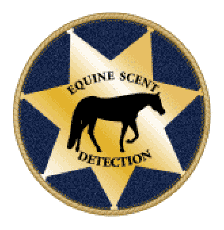
|
|
Most horses have highly effective natural scent detection abilities. It's in their DNA. A major element of this program involves teaching riders and handlers how to develop, recognize and efficiently utilize this ability.
Riders' observational skills that are enhanced through equine scent detection training can also help provide improved safety and effectiveness in other mounted activities. |
| PROPOSED PROGRAM SCHEDULE |
Friday, March 31
Saturday, April 1
Note: Times marked as "tentative" will be firmed up once we know the expected arrival times of the participants. Sunday, April 2
|
| INSTRUCTOR TERRY NOWACKI |
|
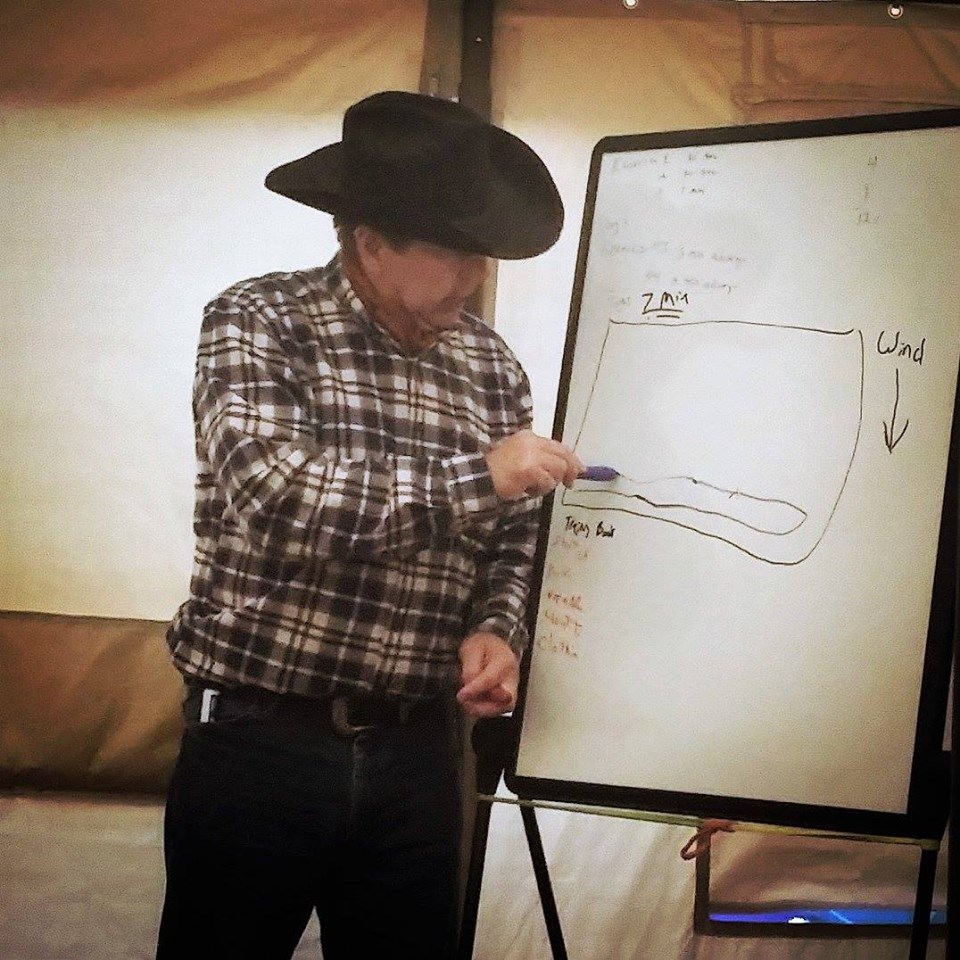
|
| REGISTRATION / WHAT TO BRING |
|
Class size is limited, particularly for mounted participants, and slots will be filled on a first-come, first-served basis based on registrations received.
Helmets and appropriate riding / safety attire are required for all horse handling activities and for "foot" participants involved with or near horse activities. Dress as if you were turning out for a search. Search scenarios will be conducted based on MSAR and ICS structures and protocols. A long lead (> 20 ft.) is needed for the in-hand detection exercises. Some stabling is available for out-of-area horses. Camping / lodging information will be provided as the program date nears. Download the Registration Form (Opens in a new window.) - Or you can download a form from the Files Section of the Mounted Public Safety and Rescue North America Facebook group. Scent Detection Links.
|
| Other Links and Resources |
Meet LRTC's Mounted Riders
Developing Confident Horses
Press Back to return to the page which brought you here
Return to LRTC Wild Horse Mentors
Return to KBR Training Page
